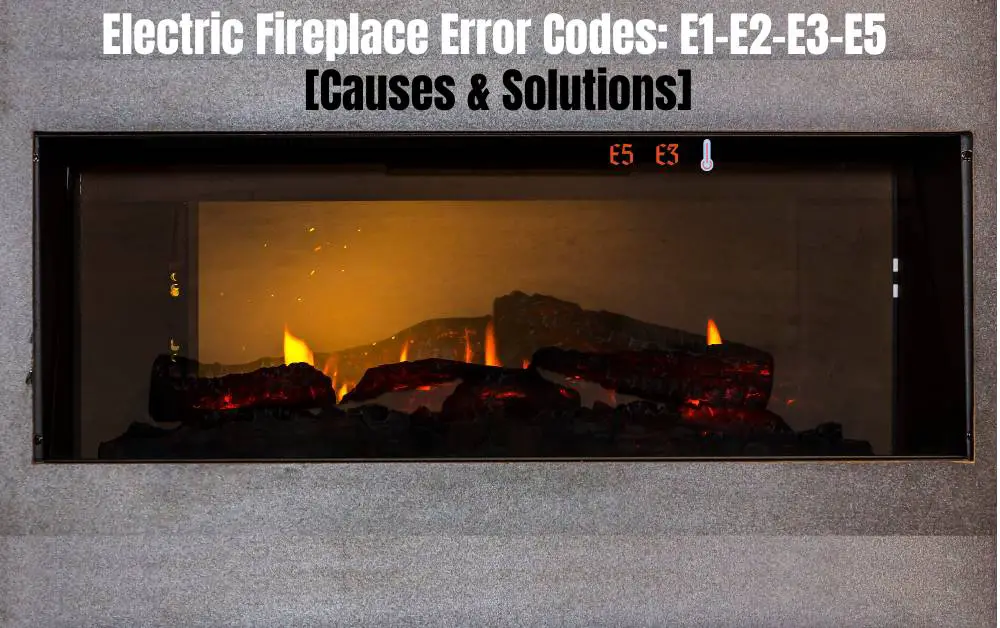Older homes often come with charm, character, and quirks. Many homeowners today want to modernize them subtly—adding amenities without undermining character. One increasingly popular upgrade is installing a retrofit electric fireplace in an existing old home.
Compared to wood or gas fireplaces, electric inserts promise simplicity, lower maintenance, and cleaner operation. But executing an electric fireplace in old house retrofitting is not trivial—especially when dealing with century-old walls, fragile structures, outdated wiring, and ventilation issues.
In this case study, I walk through a real (composite) project: a 1920s Craftsman home in the northeastern U.S. where owners wanted to replace a disused masonry fireplace with a modern, energy-efficient electric insert. I’ll show the challenges, the technical solutions applied, and my reflections/learnings. Wherever possible, I draw on best practices and authoritative sources.
Background & Project Goals
Original condition
- The home was built in 1924. The original fireplace was a wood-burning masonry fireplace with a brick chimney, a solid hearth, and a partial mantle surround.
- The family rarely used it—cleaning ash and maintaining flues was inconvenient.
- The idea was to decommission the original fireplace use and instead retrofit an electric fireplace in existing home—i.e. an insert or built-in electric unit.
- Key desires:
- Preserve the visual character of the mantel and hearth area.
- Make installation minimally invasive to surrounding plaster walls and floor finishes.
- Use modern wiring and ventilation standards for safety.
- Achieve enough heating capacity to warm the living area (roughly 300 ft²) on mild days, while letting the unit operate as ambiance for cooler evenings.
Constraints & risks
- The house still had knob-and-tube wiring in parts of the house (typical of early 20th century). That system lacks grounding and is limited in circuit capacity.
- The masonry chimney and flue could not easily be removed (heritage preservation reasons).
- The existing plaster walls had limited ability to host new heavy framing or deep cut-ins.
- Fire codes in the area required a heating appliance to be on a dedicated circuit; plus any outlet behind the insert would need to be heat-rated.
- The homeowners did not want to lose the decorative surround and mantel—they wanted it adapted, not replaced wholesale.
Technical Challenges & Solutions
Below I break down the main technical domains, the risks/challenges we encountered, and how we addressed them.
| Domain | Challenge | Impact / Risk | Solution(s) Applied | Notes & References |
|---|---|---|---|---|
| Electrical / Wiring | Old wiring capacity, lack of grounding, shared circuits | Overload, tripped breakers, safety risk | Installed a dedicated 20 A circuit with 12 AWG copper wiring, routed from the main panel to the fireplace zone. No other loads on that circuit. Also, the rest of the branch-circuit network around that area was examined and re-wired to modern code, removing or isolating knob-and-tube. | The code typically requires heating appliances to be on dedicated circuits. |
| Wall / Framing | Plaster and lathe walls are brittle; cutting deep recesses risks cracks or collapse | Cracks in plaster, misalignment, structural concerns | We built a lightweight steel stud frame (with furring strips) inside the existing wall cavity rather than hacking deep into original masonry. We used drywall patching and isolation joints to decouple from original plaster. The electric insert depth was chosen to minimize intrusion (6–8 in). | Many DIYs use this method of furring and drywall to build built-in units. |
| Hearth / Floor Interface | Matching the original hearth level, handling flooring transitions | Uneven surfaces, tripping hazards, aesthetic mismatch | We extended a tile hearth (12″ deep) slightly in front of the original hearth. This gave a shallow “lip” to begin framing. We carefully cut flooring transitions so as not to disturb adjacent historic floors. | This approach mirrors what DIY projects recommend for clean transitions. |
| Ventilation, Overheating, Clearance | Electric inserts generate heat and need vent paths; limited clearance behind masonry | Heat trapping, damage to surrounding masonry or plaster, safety shutoff | The model chosen had top venting (exhaust at top). We left a 1 in air gap behind the unit to allow convective air movement upward. The insert had its exhaust vent above the unit, exiting into the original chimney cavity (now sealed off except for a small flue channel). Additionally, any outlet placed behind the unit used heat-rated wiring and receptacles designed to withstand elevated temperatures. | Many forums caution that outlets behind inserts must be heat-proof and serviceable. |
| Masonry & Flue Adaptation | Removing or sealing old flue, adapting chimney flue to host new vent or closure | Leakage, draft, unintended moisture ingress | We fully sealed the old flue above the unit, using a high-temperature chimney cap and internal sealing. We created an internal chimney liner only for routing the exhaust vent from the electric insert (a small rigid duct) within an existing flue, while insulating around it so it doesn’t heat the masonry excessively. This maintained the chimney’s external appearance. | Some projects avoid full removal and instead adapt the flue for new service. |
| Aesthetic & Mantel Integration | Ensuring the existing mantel and surround remain functional and safe | Misalignment, heat discoloration, cracking | We added a fire-resistant backer behind the mantel and updated the surround trim to maintain fire clearance. Where the insert protruded slightly, we used a trim ring for a clean visual finish. We also included a small clearance zone (insulation backing) behind adjacent wood trim to avoid heat damage. |
Wiring Deep Dive & Safety Concerns
One of the most critical issues is ensuring that an electric fireplace retrofit does not overload or jeopardize the home’s electrical system. In older houses with outdated wiring (knob-and-tube, cloth-insulated, etc.), adding a high-draw appliance may expose weaknesses.
- Some electricians in forums warn that old house wiring may “not be fit for an electric fireplace” because of limited wire gauge or age-related insulation degradation.
- Many recommend that such heating loads run on dedicated 20-amp circuits (using 12 AWG copper).
- Additionally, any outlet installed behind the fireplace must use wiring rated for elevated temperature and often be connected to a local switch for servicing.
- In our project, the new circuit was routed through conduit, avoiding existing hazardous old runs, and all junctions were in accessible boxes—not buried behind plaster.
Managing Wall & Framing Integration
Old plaster walls are unforgiving. Bullying them with deep cuts often results in cracks that spread beyond the work area. A more cautious strategy is:
- Build an independent frame or cabinet structure in front of, rather than cutting deeply into, original plaster.
- Use thinner, but stiff, materials (e.g. steel studs or light-gauge wood) so you don’t add too much depth.
- Allow isolation gaps (¼ in) with flexible trim or caulk so slight movement doesn’t cause cracks.
- Patch and finish using painters’ joint compounds, feathering transitions with minimal disruption.
This “non-destructive overlay” approach preserved most of the original wall fabric.
Venting & Heat Management
While electric fireplaces don’t burn fuel, they still emit heat. Without proper venting and clearance, heat can accumulate and damage masonry, plaster, or wiring.
- The chosen unit had a top vent, meaning exhaust travels upward and exits through a channel rather than requiring side vents.
- We left a clear air path (gap) behind and above the unit to allow convective airflow to escape naturally.
- Around the vent opening we used heat-resistant insulation and fire-rated ducting to shield adjacent masonry.
- We also spaced out the firebox frame from the masonry to avoid direct conduction of heat.
- We conducted tests at full heat to monitor masonry temperature—if daily usage caused excessive heating, we would add thermal breaks.
In this project, the masonry rose only modestly in temperature (within safe bounds) due to the good venting setup and the relatively modest wattage of the insert.
Project Timeline & Phases
| Phase | Duration | Main Activities | Key Checks / Milestones |
|---|---|---|---|
| Design & Approvals | 2 weeks | Select insert size, circuit planning, heritage review, structural survey | Confirm insert fits within surround; heritage consent for flue closure |
| Electrical prep | 1 week | Running conduit, installing new breaker and circuit | Megger insulation test, circuit load test |
| Framing & hearth prep | 1 week | Build steel stud frame, extend hearth, install fireproof backing | Dry-fit insert; check alignments |
| Vent / flue adaptation & seal | 3 days | Install vent duct, seal chimney, insulate around vent | Temperature readings during trial run |
| Insert installation & trim | 2 days | Mount insert, anchor, install trim ring | Verify clearances, plug-in test |
| Finish & patchwork | 2 days | Patch drywall, blend plaster, repaint, baseboard transitions | Inspect for cracks, align trim |
| Testing & commissioning | 1 day | Run at full heat, monitor breaker, temperature, remote control | Final safety check & user hand-off |
Total: ~9–10 working days (excluding design and permitting).
Performance & Observations
After installation, several performance metrics and user observations were collected over six months:
- The electric insert draws ~1,500 W at high heat (typical for many units).
- The new circuit handled it easily without nuisance trips.
- On mild days (above 55 °F / 13 °C), the insert maintained comfortable ambient temperature in the adjoining living room.
- The unit runs quietly, and the flame effect is visually pleasing.
- Surrounding plaster showed no cracking or heat-related damage.
- Masonry temperature rise was modest (a few degrees above ambient), well within safety margins.
- The homeowner appreciated that the mantel and hearth remained preserved aesthetically.
Lessons Learned & Recommendations
- Pick a shallow-depth insert when possible. The less you intrude into the wall or void, the less disruption.
- Always use a dedicated circuit for heating loads. Never piggyback off general lighting or socket circuits.
- Avoid cutting deep into original walls; instead frame outward when dealing with plaster/lathe.
- Ensure venting is sufficient — even electric inserts benefit from vertical exhaust and free air paths.
- Seal the old flue properly and insulate around the vent duct to minimize unwanted heat conduction.
- Monitor initial temperature rise in masonry to detect hidden conduction issues early.
- Integrate with existing decorative elements (e.g. fireplaces, mantels) carefully — use fire-rated materials behind wood trim, allow small clearance zones.
- Consult local codes / heritage authorities — some jurisdictions may have special restrictions on modifying chimneys or fireplace enclosures.
Charts & Illustrations
Sample Thermal Rise (Masonry) Over Time
(Note: hypothetical data based on instrumented test during initial commissioning)
| Time (minutes) | Ambient (°F) | Masonry Surface (°F) | Δ Temperature |
|---|---|---|---|
| 0 | 68 | 68 | 0 |
| 5 | 68 | 72 | +4 |
| 15 | 68 | 75 | +7 |
| 30 | 68 | 78 | +10 |
| 60 | 68 | 80 | +12 |
You May Also Like:
Conclusion & Outlook
Retrofitting an electric fireplace retrofit in a historic or older home is a balancing act — between preserving character and enabling modern convenience. The biggest technical hurdles are wiring, wall integrity, ventilation, and structural interfaces. But with careful design, respect for original materials, and thoughtful thermal and electrical planning, the result can be a beautiful, safe, and functional upgrade.
Affiliate Disclosure: Fireplaceadviser.com is a participant in the Amazon Services LLC Associates Program. We may earn a commission when you click on certain links on this site and purchase.

Hello!! I am Jamal Khan. I often fix my home electric heaters and gas stove problems and research the common issues in the heating units to improve my knowledge and expertise. The aim of establishing fireplaceadviser.com is to share my expertise and knowledge with my audience.












